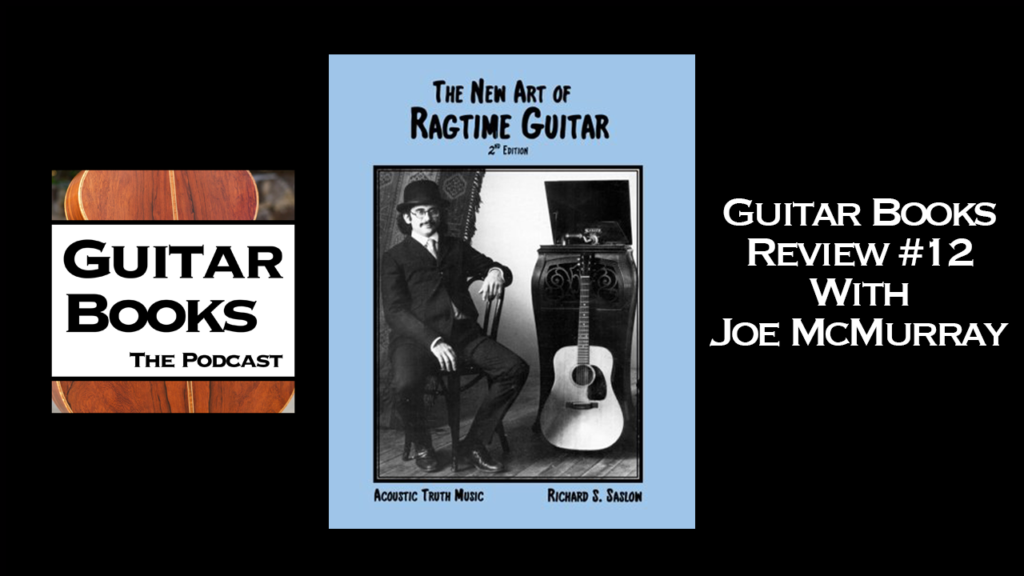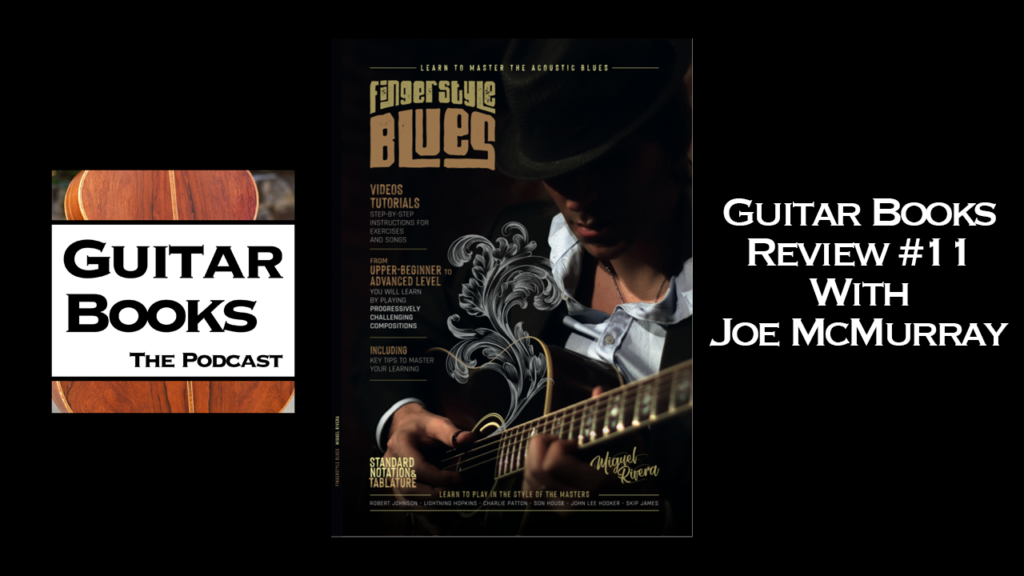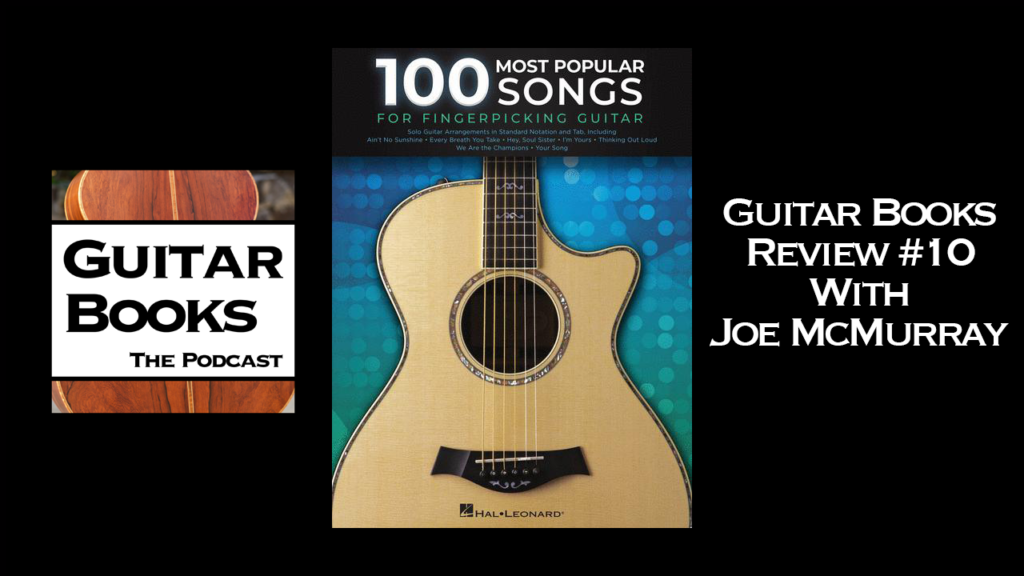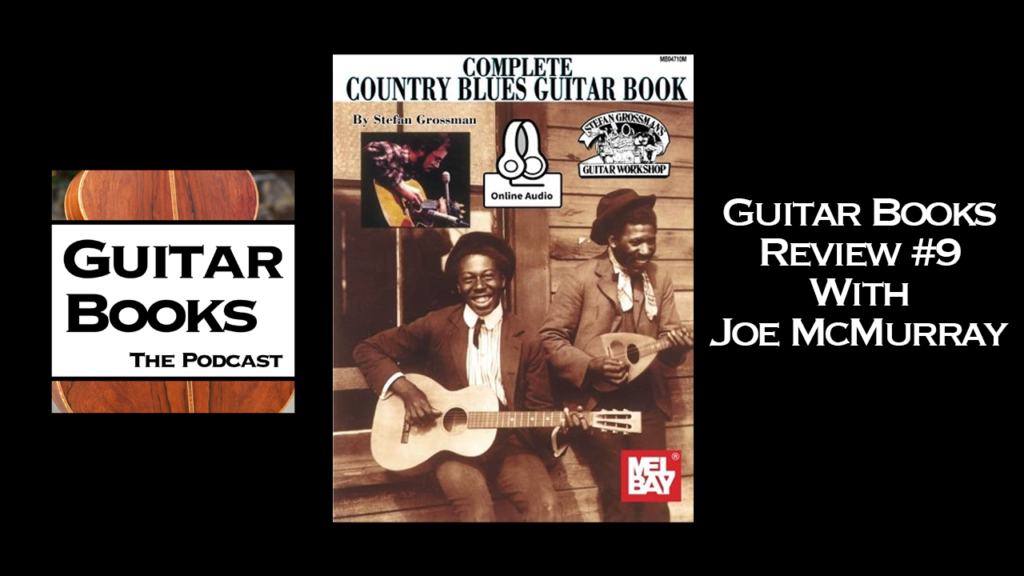Podcast: Play in new window | Download (Duration: 23:15 — 32.1MB) | Embed
Subscribe: Apple Podcasts | RSS | More
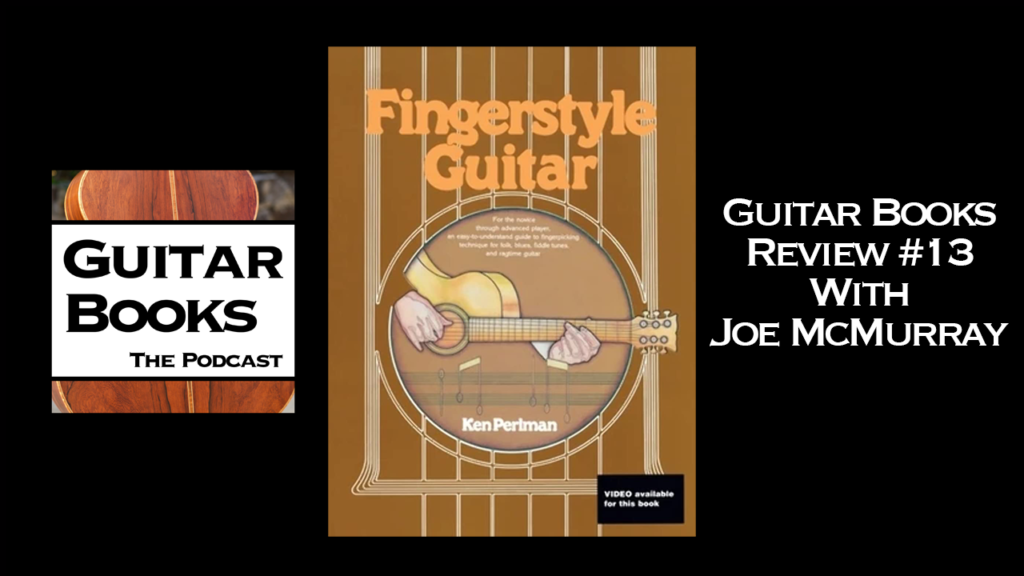
Is this one of the best or worst method books for fingerstyle guitar?
You can learn to play music by simultaneously using a variety of resources including teachers, online resources, and books.
Ken Perlman’s Fingerstyle Guitar is a method book for learning to play solo fingerstyle guitar in the folk, blues, fiddle tune, Celtic, and ragtime styles. The book becomes progressively more difficult – the beginning is appropriate for beginner fingerstyle players, and the end is challenging for intermediate and even advanced players. The book is extremely long (232 pages) and extremely detailed with sections of dense explanatory text. While I enjoy many of the tunes in this book (especially the Irish, English, and Scottish fiddle tunes), some of the arrangements are clunky, difficult, and not worth the effort. While I’m happy to have worked through Fingerstyle Guitar, I would not recommend this to most players unless you are specifically interested in older styles of music and you’ve already exhausted other options.
The book quickly introduces alternating bass (Travis picking) arrangements and gradually presents standard guitar techniques including hammer-ons, pull-offs, slides, etc. I like that Perlman provides exercises and lots of short, accessible tunes like Elizabeth Cotton’s Freight Train to build your technique. The tunes and arrangements are stylistically similar to those in Stefan Grossman’s Complete Country Blues Guitar Book and Complete Celtic Fingerstyle Guitar Book but with more technical explanations. The book also provides types of tunes similar to those found in Mel Bay’s Complete Chet Atkins Guitar Method although with a very different teaching approach.
While the first five chapters of the book are accessible with some fun 20 second tunes, the book’s difficulty increases starting in Chapter 6. The tunes move higher up the fretboard, utilizing alternate tunings, and requiring much more fretting with your thumb over the top. These are important things to learn and prepare you for the fun repertoire-heavy chapters at the end of the book.
The final four chapters of the book provide repertoire tunes organized into categories: “Southern Fiddle Tunes,” “Old-Time Songs and Ballads,” “Irish, English, and Scottish Fiddle Tunes,” and “Rags.” There are some nice arrangements in these chapters, but I found that many of the arrangements seem to be especially difficult. I believe that a good arrangement should find a balance between the complexity of the tune and playability, and many of these arrangements just feel clunky to me. Lots of difficult passages and fingerings even after putting in serious practice. There are detailed explanations of techniques (hammer-ons, slides, etc.), but little explanation of how to actually play through an individual tune with a smooth performance. Other books like Richard Saslow’s The New Art of Ragtime Guitar provide smoother arrangements and much more tune-specific help.
If you are a performing musician, you will find that most of these tunes are too short to actually play out at gigs without coming up with your own variations. The exceptions are the rags in the final chapter which are quite lengthy and difficult. For the shorter tunes throughout the book, there is no discussion about how to go about extending them for performance.
Perlman provides some cool background information on styles and specific tunes. The Celtic fiddle tune chapter has great information on the differences between single jigs, double jigs, slip jigs, set tunes, reels, hornpipes, and slow aires, with great examples of each.
The book provides examples in both TAB and standard notation (treble clef). Each tune/example is presented in its entirety in TAB, and then again in standard notation. This is great in that it minimizes page turns if you are reading the tune. It is also highly annoying because all of the fingering details are only included in the standard notation, so if you are reading the TAB version of the tune, you have to constantly flip over and search through the standard notation version. The author/publisher should have included the fingerings in the TAB. Also, after the beginning of the book, there is no right hand fingering.
Overall, this book contains a wide scope of valuable information and fun old folk, blues, fiddle, Celtic, and ragtime tunes. Many of the arrangements feel clunky and difficult to me even after putting in a lot of work. Many of the explanations of techniques are helpful if you’ve never used them before but are hard to read. If you want to play fingerstyle guitar, don’t start with this book.
The book doesn’t get into the modern percussive techniques used by modern players like Michael Hedges, Don Ross, Andy McKee, Mike Dawes, etc. No thumb slaps, guitar body percussion, or tapping.
I recommend using an acoustic steel string guitar rather than a classical guitar since there are many tunes that utilize the fretting hand thumb over the top.
Published by Centerstream Publishing © 1980, 2002. Distributed by Hal Leonard.
My eBook: Arranging for Fingerstyle Guitar: go to http://joemcmurray.com/checkout/ to purchase a pdf of my eBook.
My music is available on all streaming platforms:
Riding the Wave: my second fingerstyle guitar album.
Pins on the Map: my third fingerstyle guitar album will be released in January 2024. The first single, “Open Road,” was released 10/20/23. Watch it on YouTube here: https://youtu.be/uPBh8sZQsT4?si=EM_wAwnHFqU1VC9C. The second single, “Lost and Found,” was released 11/3/23.
